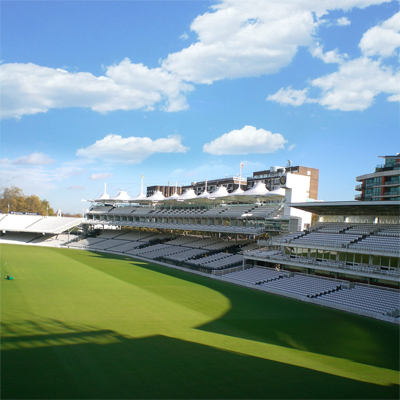The Impact of Golf Course Architects on Sporting Excellence

Golf, a sport that combines skill, strategy, and precision, has captivated enthusiasts for centuries. But what makes a golf course truly exceptional? Enter the golf course architect, the mastermind behind designing these lush landscapes. In this article, we delve into the impact that golf course architects have on sporting excellence.
The role of golf course architects in shaping the game
Golf course architects play a crucial role in shaping the game of golf. They are responsible for designing and creating the layouts of golf courses, ensuring that each hole presents a unique challenge to the players. The design of a golf course can significantly impact the strategy and skill required to excel in the sport.
When architects approach the task of designing a golf course, they consider various factors such as the natural terrain, the surrounding environment, and the intended difficulty level. The layout of the fairways, bunkers, and greens is carefully planned to provide a fair but challenging playing experience.
Moreover, golf course architects need to take into account the needs of different types of players, from beginners to professionals. They strive to create a course that is enjoyable for all skill levels while still providing a worthy challenge for the most experienced golfers. By doing so, they contribute to the growth and development of the sport.
The history of golf course architecture
The art of golf course architecture has a rich and fascinating history. It dates back to the origins of the game itself, with early courses being simple, natural landscapes that were adapted for golf. As the sport gained popularity, architects began to design purpose-built courses, incorporating features such as hazards and strategically placed bunkers.
One of the most influential figures in the history of golf course architecture is Old Tom Morris. Morris, a professional golfer, and clubmaker, was also a skilled course designer. He is credited with designing some of the oldest and most iconic courses in the world, including the Old Course at St Andrews in Scotland.
Over the years, golf course architecture has evolved alongside advancements in technology and changes in playing styles. Architects have embraced new design principles and techniques, resulting in courses that offer a diverse range of challenges and playing experiences.
Famous golf course architects and their notable designs
Throughout history, numerous golf course architects have left their mark on the sport with their exceptional designs. These architects have created some of the most iconic and challenging courses in the world, each with its unique characteristics.
One such architect is Alister MacKenzie, known for his work on Augusta National Golf Club.
MacKenzie's design philosophy emphasized the integration of natural elements into the course, creating a harmonious blend of beauty and challenge. Augusta National, home of the Masters Tournament, is widely regarded as one of the most prestigious and visually stunning courses in the world.
Another renowned architect is Pete Dye, famous for his bold and innovative designs. Dye's courses, such as TPC Sawgrass and Whistling Straits, are known for their strategic bunkering, undulating greens, and visually striking features. Dye's designs test the skills and decision-making abilities of even the most skilled golfers.
The impact of golf course design on player performance
The design of a golf course can have a significant impact on player performance. A well-designed course challenges golfers to think strategically, adapt to different playing conditions, and execute shots with precision. The layout of fairways, bunkers, and greens can influence the strategy and shot selection of players.
For example, the placement of hazards and the shape of fairways can dictate the ideal positioning for tee shots, requiring players to carefully consider their shot selection. Additionally, the design of greens can affect the difficulty of approach shots and putting, putting a premium on accuracy and touch.
Furthermore, the overall difficulty and complexity of a golf course can also impact a player's mental game. A challenging course can test a golfer's patience, resilience, and ability to stay focused. It can push players to dig deep and find ways to overcome adversity, leading to improved performance and a higher level of play.
Factors to consider in golf course design for sporting excellence
To create a golf course that promotes sporting excellence, golf course architects must consider various factors during the design process.
One crucial factor is the integration of the course with its natural surroundings. Architects need to carefully study the terrain, vegetation, and existing features to ensure a seamless blend between the course and its environment. By doing so, they create a visually appealing and harmonious playing experience.
Another key consideration is the balance between difficulty and fairness. While a challenging course can promote growth and improvement, it is essential to strike a balance that allows players of all skill levels to enjoy the game. Architects must carefully design the placement of hazards, the width of fairways, and the contouring of greens to create a fair but challenging experience.
Furthermore, architects must take into account the impact of weather conditions on the course. Wind patterns, rainfall, and other climate factors can significantly affect the playability and strategy of a golf course. By incorporating these factors into the design, architects create a course that offers a dynamic and ever-changing challenge.
The relationship between golf course architects and professional golfers
The relationship between golf course architects and professional golfers is a symbiotic one. Professional golfers rely on well-designed courses to showcase their skills and compete at the highest level. Architects, in turn, rely on the feedback and expertise of professional golfers to refine and improve their designs.
Professional golfers provide valuable insights into the playing experience and can offer suggestions for enhancing the course's challenges and strategic elements. Architects often collaborate with professional golfers during the design process, seeking their input on specific holes, hazards, and overall course layout.
Additionally, professional golfers have the opportunity to shape the future of golf course architecture through their performances on these courses. Their accomplishments and records set on iconic courses can elevate the reputation and legacy of both the golfers and the architects behind the designs.
The future of golf course architecture and its impact on the sport
The future of golf course architecture holds great promise for the sport. As technology continues to advance, architects will have access to innovative tools and techniques that can further enhance the design process. This includes the use of computer modeling, aerial mapping, and virtual reality simulations, allowing architects to visualize and refine their designs with unparalleled accuracy.
Furthermore, sustainability and environmental considerations will play an increasingly significant role in golf course design. Architects are incorporating eco-friendly practices, such as water conservation, native plantings, and wildlife preservation, into their designs.
These efforts not only promote the longevity of the golf course but also contribute to the preservation of natural habitats and ecosystems.
The impact of golf course architecture on the sport will continue to evolve as players and audiences demand new and exciting experiences. Architects will be tasked with creating courses that challenge the boundaries of tradition while still honoring the core principles of the game. This balance between innovation and respect for the sport's heritage will shape the future of golf course architecture.
Golf course architecture as a career path
For those passionate about golf and design, golf course architecture offers a rewarding career path. Becoming a golf course architect requires a combination of skills, including a deep understanding of the game, knowledge of landscape architecture, and a creative eye for design.
Prospective golf course architects often start by studying landscape architecture or a related field. They then gain practical experience by working with established architects and assisting in the design and construction of golf courses. Over time, they develop their own unique style and approach to golf course design.
Golf course architecture is a highly specialized field that requires continuous learning and adaptation. Architects must stay updated on the latest trends, technological advancements, and environmental practices to create courses that meet the evolving needs of the sport and its players.
Conclusion: The lasting legacy of golf course architects in sporting excellence
Golf course architects play an integral role in shaping the game of golf and promoting sporting excellence. Their expertise goes beyond aesthetics, encompassing an in-depth understanding of the sport, environmental considerations, and strategic design principles.
Through their designs, golf course architects create a playing experience that challenges golfers of all skill levels, pushing them to reach new heights in their performance. Their influence can be seen in iconic courses around the world, where the handiwork of architects has left an indelible mark on the sport.
As the sport continues to evolve, golf course architecture will remain a vital aspect of its growth and development. Architects will continue to shape the future of golf through innovative designs, sustainable practices, and a commitment to creating courses that inspire and challenge players.
In conclusion, the impact of golf course architects on sporting excellence is undeniable. Their dedication to creating exceptional courses ensures that golf remains a sport that captivates players and fans alike for generations to come.





